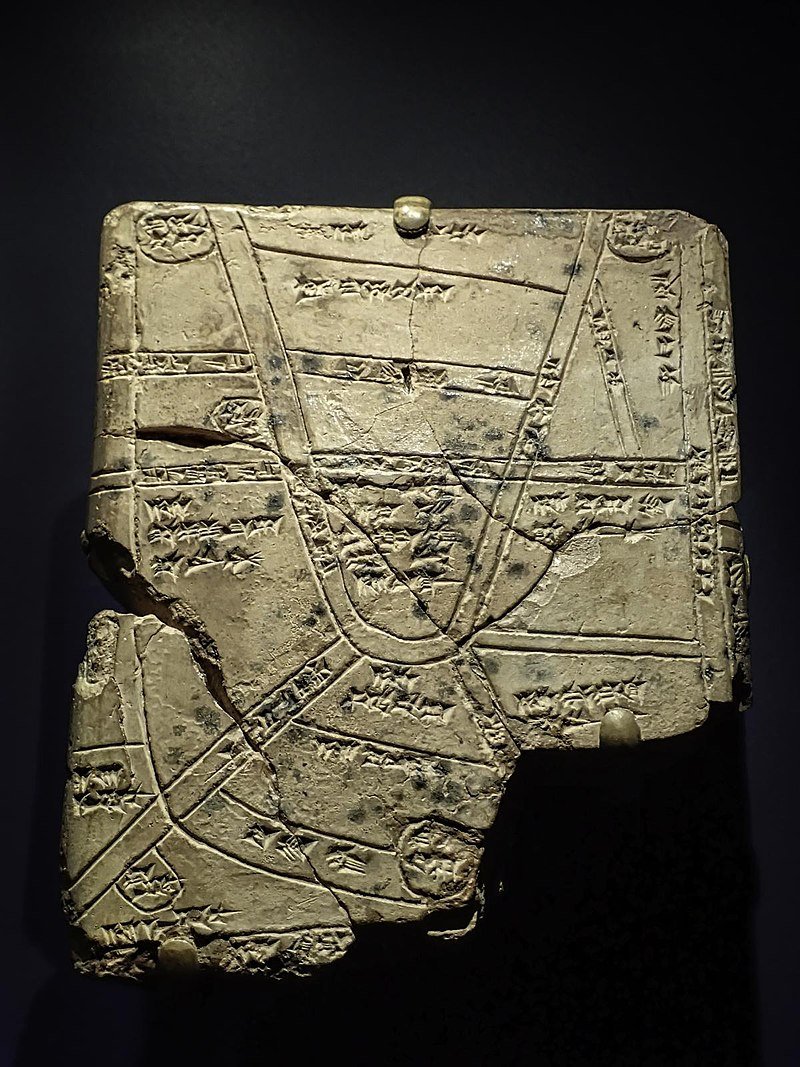Nippur – Holy City Of God Enlil And One Of The Oldest Cities Of Sumer
A. Sutherland - AncientPages.com - Nippur (Sumerian: Nibru, "Enlil City"; Akkadian: Nibbur) was among the most ancient Sumerian cities and one of the most important religious centers throughout Mesopotamia. Some researchers date back the city's creation to about 5000 BC.
In the 4th millennium BC the temple of the Sumerian wind god Enlil at Nippur in present Iraq was a famous pilgrimage center. The rectangular palace atop the ancient ziggurat dates from the Parthian period and is thus thousands of years younger. Omage credit: David Stanley - CC BY 2.0
Throughout the history of Sumer, Nippur - located northeast of the town of Ad-Diwaniyah, now in southeastern Iraq - had a special place among the cities.
Based on the earliest existing records, it is known that Nippur was not a capital but a sacred city, a central and unique shrine of the region. Its holy character helped Nippur survive several wars and the fall of dynasties that destroyed other cities.
Nippur was the seat of Enlil, the chief god of the Sumerian pantheon, the "Lord Wind," ruler of the cosmos, and one of the triads of gods, including Anu (Sumerian: An) and Ea (Sumerian: Enki). The city - located halfway between Ur and Sippar - also played a significant political role.
Based on the earliest existing records, it is known that Nippur was not a capital but a sacred city, a central and unique shrine of the region. Its holy character helped Nippur survive several wars and the fall of dynasties that destroyed other cities.
Nippur, Temple of Bel excavation, 1896. Hilprecht, H. V. (Hermann Vollrat), 1859-1925 - Old Babylonian inscriptions. Published 1896 - Public Domain
Kings were involved in the city's restoration of temples, construction of fortification walls, public administrative buildings, and canals. Even after 1800 BC., when the Babylonians made Marduk the most critical god in southern Mesopotamia, Enlil was still worshiped and had his sanctuary. Nippur remained a holy and prestigious city, with over a hundred temples, regardless of which dynasty ruled Mesopotamia.
Probably because of its strategic location and sacred meaning, it remained a neutral city.
Cuneiform tablet from Nippur, in the name of Shar-Kali-Sharri, 2300–2100 BC. Image credit: Mary Harrsch - CC BY 2.0
Nippur's most significant growth occurred under the Ur III kings (c. 2100 BC). It was almost matched in the time of the Kassites (c. 1250 BC.) and when the Assyrians from northern Iraq dominated Babylonia (c. 750-612 BC).
The first mention of Nippur is related to the construction of a temple dedicated to Enlil. It was erected during the reign of King Enmebaragesi, a king of Kish, according to the Sumerian king list. The list states that he subdued Elam and reigned for 900 years.
Enmebaragesi dominated Sumer around the year 2700 BC and also controlled Nippur. Little is known about the prehistoric city of Nippur, but by 2500 BC, the city expanded, was fortified, and probably reached the extent of the present remains.
In about 2450 BC, the city became part of the empire of Eannatuma of Lagash. About 2430 BC, Nippur was conquered by Enshakushanna, a king of Uruk in the later 3rd millennium BC, who, according to the Sumerian King List, reigned for 60 years.
Babylonian cuneiform tablet with a map from Nippur, Kassite period, 1550–1450 BC. Image credit: Mary Harrsch - flickr.com - CC BY 2.0
About .2300 BC, Sargon's Akkadian empire controlled the city, and around the year 2230 BC, Sargon's grandson - Naram-Sin - under the influence of the temple's oracle, attacked Enlil in Nippur. As a result, there was a meeting of the eight most essential gods, who withdrew their support for the king; the city's inhabitants began to suffer from hunger.
With the collapse of the Sumerian civilization and Ur about 2000 BC, Nippur was briefly occupied by the Elamites and later incorporated into the Amorite kingdom of Isin.
The remains of the Nippur, which today are named Nuffar, were excavated in 1851 and during different periods, namely in 1888 - 1900 and 1948 – 1990.
In the city's eastern part, the so-called 'scribal quarter,' archaeologists unearthed several thousands of Sumerian tablets, with economic, linguistic, and many examples of the Sumerian literary texts. Most of them were found in the archives in two private homes.
Another part of the city was the 'sacred area' with the temple complex and a ziggurat called E-kur (in its present form), where construction works were performed by the first kings of the Third Dynasty of Ur - Ur-Nammu and Shulgi (2094–2047).
In one of the trenches, archaeologists discovered two prominent temples; one was the temple of Inanna, goddess of love and war, one of the most important deities in the Mesopotamian pantheon, and another, the Temple of the North – the remains of the palace, the temple library, which provided 20 thousand tablets and tombs, where the dead were buried after partial burning.
The excavation conducted in 1990 revealed an Akkadian tomb and a large temple to Bau (Gula), the Mesopotamian goddess of healing and medicine, whose special symbol was a dog.
Among various artifacts were several figurines of dogs found on floors and buried in the plaster on walls; fragmentary figures of human beings having pain; one with his hand to his throat, another with one hand to his head, and one to his stomach.
Written by A. Sutherland - AncientPages.com Staff Writer
Updated on January 16, 2024
Copyright © AncientPages.com All rights reserved. This material may not be published, broadcast, rewritten or redistributed in whole or part without the express written permission of AncientPages.com
Expand for referencesKramer Samuel Noah. N. The Sumerians
Kriwaczek, Paul. Babylon: Mesopotamia and the Birth of Civilization
More From Ancient Pages
-
 On This Day In History: Treaty Of Picquigny – Negotiations Between England And France – On Aug 29, 1475
News | Aug 29, 2017
On This Day In History: Treaty Of Picquigny – Negotiations Between England And France – On Aug 29, 1475
News | Aug 29, 2017 -
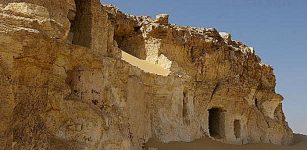 Ancient Mummy Of ‘Hatason’: Woman Who Died In Egypt More Than 3,000 Years Ago – Stanford Radiologists Investigate
Archaeology | Dec 2, 2015
Ancient Mummy Of ‘Hatason’: Woman Who Died In Egypt More Than 3,000 Years Ago – Stanford Radiologists Investigate
Archaeology | Dec 2, 2015 -
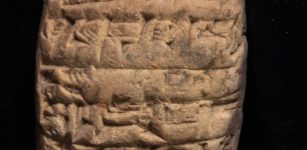 Lost City Of Irisagrig Comes To Life In Ancient Stolen Tablets
Archaeology | Jun 5, 2018
Lost City Of Irisagrig Comes To Life In Ancient Stolen Tablets
Archaeology | Jun 5, 2018 -
 Magnificent Hochdorf Chieftain’s Grave – Resting Place Of The Celtic Tutankhamun
Featured Stories | Aug 19, 2019
Magnificent Hochdorf Chieftain’s Grave – Resting Place Of The Celtic Tutankhamun
Featured Stories | Aug 19, 2019 -
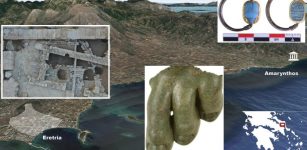 Sanctuary Of Amarysia Artemis, Amarynthos – New Valuable Finds By Greek-Swiss Team
Archaeology | Sep 26, 2022
Sanctuary Of Amarysia Artemis, Amarynthos – New Valuable Finds By Greek-Swiss Team
Archaeology | Sep 26, 2022 -
 Deception And Hidden Truth – Ancient Struggle Of The Eagle And Serpent – Part 2
Ancient and Unexplained Mysteries Library - Premium Content Preview | Sep 6, 2019
Deception And Hidden Truth – Ancient Struggle Of The Eagle And Serpent – Part 2
Ancient and Unexplained Mysteries Library - Premium Content Preview | Sep 6, 2019 -
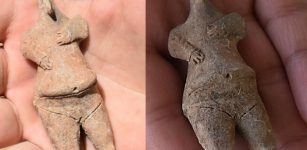 7,800-Year-Old Clay Female Figurine Unearthed In Ulucak Mound, Turkey’s Izmir
Archaeology | Aug 17, 2022
7,800-Year-Old Clay Female Figurine Unearthed In Ulucak Mound, Turkey’s Izmir
Archaeology | Aug 17, 2022 -
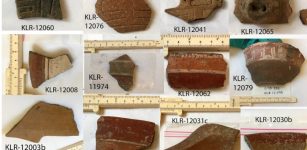 Surprising Diversity Of Ethnic Groups In The US Virgin Islands Before Columbus – New Study
Archaeology | May 18, 2023
Surprising Diversity Of Ethnic Groups In The US Virgin Islands Before Columbus – New Study
Archaeology | May 18, 2023 -
 Neolithic Watermelons Reveal Some Surprises About Our Ancestors
Archaeology | Aug 6, 2022
Neolithic Watermelons Reveal Some Surprises About Our Ancestors
Archaeology | Aug 6, 2022 -
 Remains Of Medieval Port Discovered In Eindhoven
Archaeology | Nov 17, 2020
Remains Of Medieval Port Discovered In Eindhoven
Archaeology | Nov 17, 2020 -
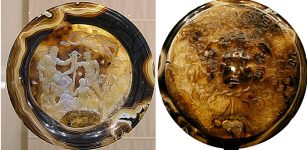 Tazza Farnese (Farnese Cup) – Mysterious, Never Explained And Debated Ancient Gemstone
Artifacts | Aug 31, 2022
Tazza Farnese (Farnese Cup) – Mysterious, Never Explained And Debated Ancient Gemstone
Artifacts | Aug 31, 2022 -
 Native Americans’ Unexplained Encounter With A Strange Underground Humanoid 500 Years Ago – Who Was This Being?
Featured Stories | Oct 31, 2024
Native Americans’ Unexplained Encounter With A Strange Underground Humanoid 500 Years Ago – Who Was This Being?
Featured Stories | Oct 31, 2024 -
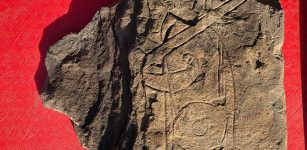 Remarkable Early Medieval ‘Govan Warrior’ Stone Discovered In Glasgow, Scotland
Archaeology | Sep 22, 2023
Remarkable Early Medieval ‘Govan Warrior’ Stone Discovered In Glasgow, Scotland
Archaeology | Sep 22, 2023 -
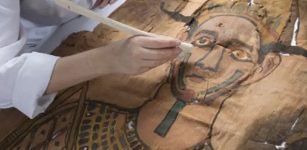 Remarkable Discovery: 2,000-Year-Old Mummy Shroud Found In Museum Collection
Archaeology | Mar 10, 2017
Remarkable Discovery: 2,000-Year-Old Mummy Shroud Found In Museum Collection
Archaeology | Mar 10, 2017 -
 Mighty Viking Harald Hardrada – The Last Great Viking And Most Feared Warrior Of His Time
Featured Stories | Jun 9, 2020
Mighty Viking Harald Hardrada – The Last Great Viking And Most Feared Warrior Of His Time
Featured Stories | Jun 9, 2020 -
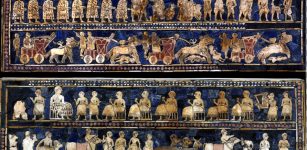 Image Of The Day: ‘The Standard of Ur – War And Peace’
Civilizations | Sep 7, 2015
Image Of The Day: ‘The Standard of Ur – War And Peace’
Civilizations | Sep 7, 2015 -
 17 Mysterious Miniature Coffins In Scotland Remain An Unsolved Enigma
Artifacts | Feb 24, 2018
17 Mysterious Miniature Coffins In Scotland Remain An Unsolved Enigma
Artifacts | Feb 24, 2018 -
 Ancient DNA Reveals Easter Island’s Population Collapse Never Occurred
DNA | Sep 16, 2024
Ancient DNA Reveals Easter Island’s Population Collapse Never Occurred
DNA | Sep 16, 2024 -
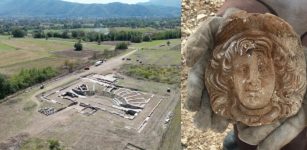 Roman ‘Backwater’ Challenges Major Assumptions About The Ancient Empire’s Decline
Archaeology | Dec 12, 2023
Roman ‘Backwater’ Challenges Major Assumptions About The Ancient Empire’s Decline
Archaeology | Dec 12, 2023 -
 Never-Before-Seen Object Found In The Skull Of Powerful Ancient Ruler Raises Many Questions
Featured Stories | Nov 12, 2024
Never-Before-Seen Object Found In The Skull Of Powerful Ancient Ruler Raises Many Questions
Featured Stories | Nov 12, 2024




